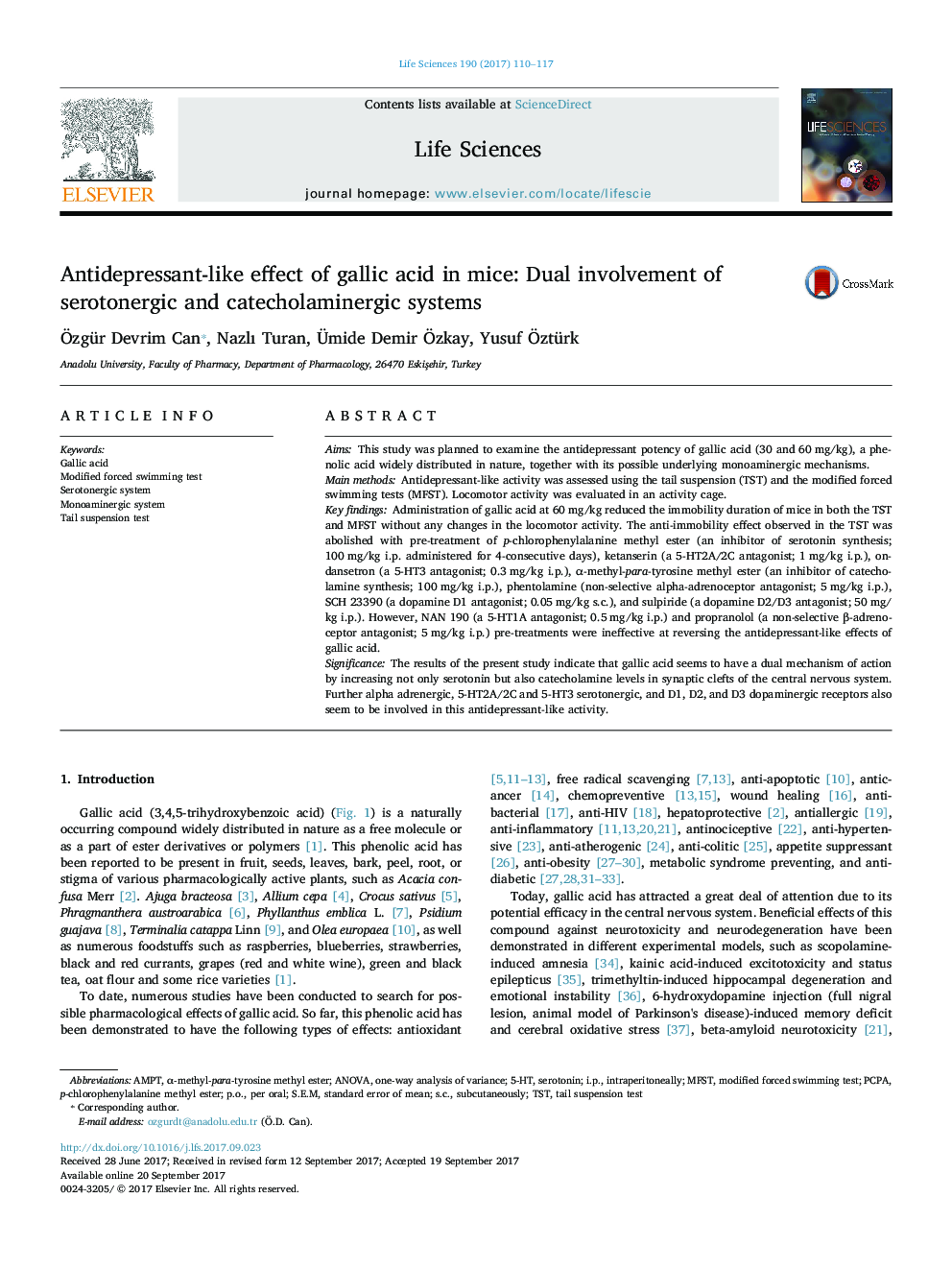| Article ID | Journal | Published Year | Pages | File Type |
|---|---|---|---|---|
| 5556729 | Life Sciences | 2017 | 8 Pages |
AimsThis study was planned to examine the antidepressant potency of gallic acid (30 and 60 mg/kg), a phenolic acid widely distributed in nature, together with its possible underlying monoaminergic mechanisms.Main methodsAntidepressant-like activity was assessed using the tail suspension (TST) and the modified forced swimming tests (MFST). Locomotor activity was evaluated in an activity cage.Key findingsAdministration of gallic acid at 60 mg/kg reduced the immobility duration of mice in both the TST and MFST without any changes in the locomotor activity. The anti-immobility effect observed in the TST was abolished with pre-treatment of p-chlorophenylalanine methyl ester (an inhibitor of serotonin synthesis; 100 mg/kg i.p. administered for 4-consecutive days), ketanserin (a 5-HT2A/2C antagonist; 1 mg/kg i.p.), ondansetron (a 5-HT3 antagonist; 0.3 mg/kg i.p.), α-methyl-para-tyrosine methyl ester (an inhibitor of catecholamine synthesis; 100 mg/kg i.p.), phentolamine (non-selective alpha-adrenoceptor antagonist; 5 mg/kg i.p.), SCH 23390 (a dopamine D1 antagonist; 0.05 mg/kg s.c.), and sulpiride (a dopamine D2/D3 antagonist; 50 mg/kg i.p.). However, NAN 190 (a 5-HT1A antagonist; 0.5 mg/kg i.p.) and propranolol (a non-selective β-adrenoceptor antagonist; 5 mg/kg i.p.) pre-treatments were ineffective at reversing the antidepressant-like effects of gallic acid.SignificanceThe results of the present study indicate that gallic acid seems to have a dual mechanism of action by increasing not only serotonin but also catecholamine levels in synaptic clefts of the central nervous system. Further alpha adrenergic, 5-HT2A/2C and 5-HT3 serotonergic, and D1, D2, and D3 dopaminergic receptors also seem to be involved in this antidepressant-like activity.
